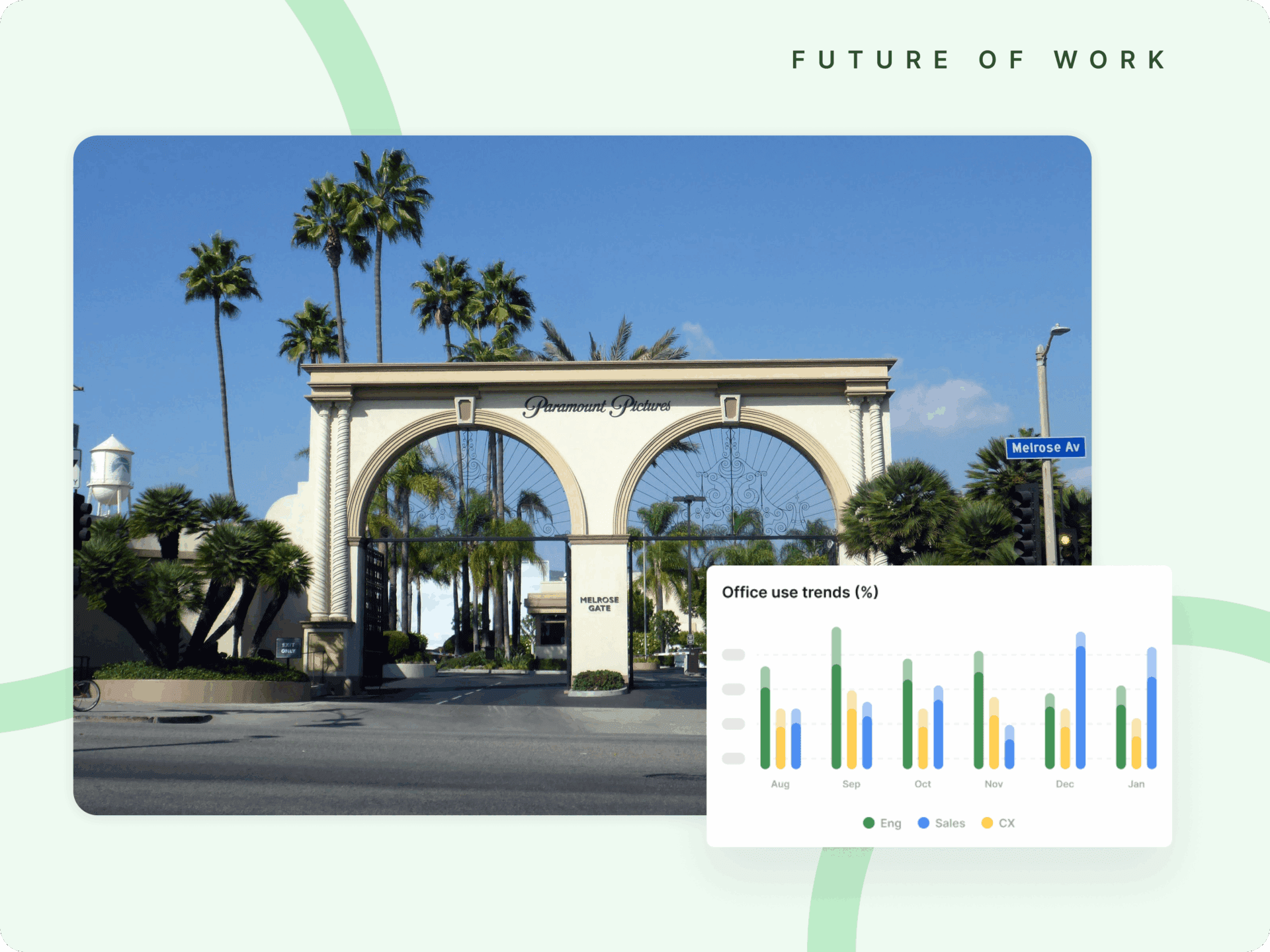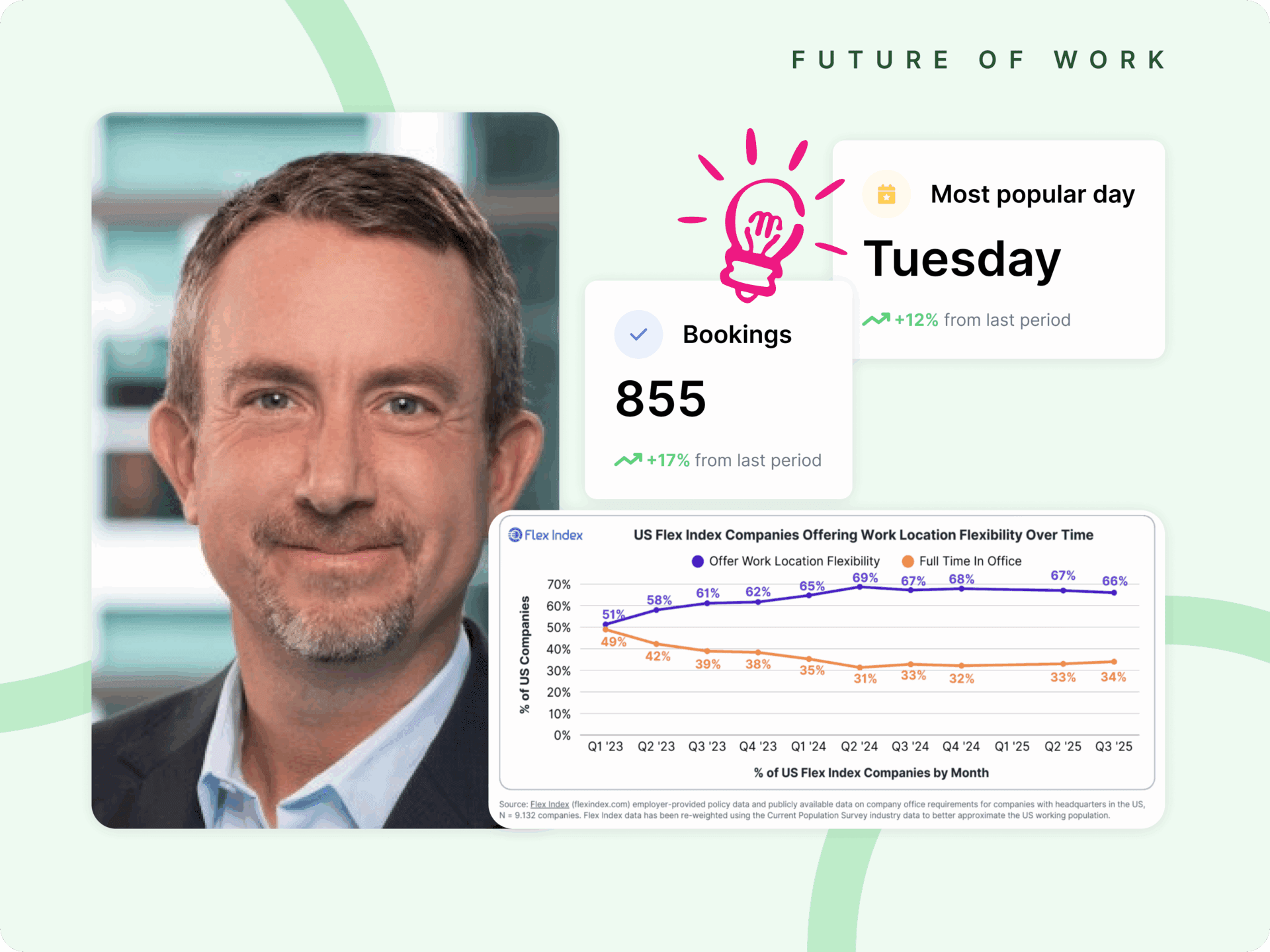Finding Desk Booking Solutions: IT Manager’s Guide | Kadence
Your company has decided to become hybrid. It needs desk booking software for a safe return to the office in the next quarter. And you – in addition to adjusting to the new work model, you’re suddenly taking on duties you never expected to be there.
You’re balancing IT, facilities and workplace experience management, as you are:-
- overseeing tech, software, and the overall information infrastructure;
- implementing safety protocols;
- navigating the return-to-work plan to provide hybrid workers with the technology and the software they need;
- defining the requirements for a desk booking solution to adopt ASAP;
- helping the company optimize and repurpose its real estate;
- trying to secure clear ROI to drive internal buy-in and user adoption.
In many ways, you’ve become the architect of the future of your company.
“At the moment, if I’m honest, I don’t think we’re clear on what we need,”
An IT director admitted during a call. He’s not alone.
After surveying 100 executives across industries and geographies, McKinsey discovered that, although 90% of them expected to become a hybrid company, most had no more than a high-level plan, and a third hadn’t been able to reach an internal consensus on what the hybrid workplace would look like.
This lack of clarity increases the risk of taking on a desk booking solution that’s not the right match – either because there wasn’t enough time to research and evaluate the options thoroughly or because you hadn’t considered all your needs and the hidden costs of the solution before implementing it.
To avoid transferring the shortcomings of the previous working setup or imitating a would-be industry standard that doesn’t work for your company, start by identifying the outcome you want to see:
- What’s the hybrid work model the desk booking solution will need to support.
- Will there be set office days or regular in-person team/company meetings?
- What’s the office’s function: collaboration only, focused work, a bit of both?
- The safety protocols and restrictions you’ll need to implement, such as closing certain desks or office areas.
- The level of reporting you’ll need.
- Software integrations required.
- The minimum viable and the ideal security setup.
Understanding the end goal will bring you a step closer to identifying the non-negotiables – the core functions needed to support different end users.
To complete this process, make sure the company has defined employee personas based on:
1. Their hybrid work needs and preferences;
2. How often they want to be in the office and what for;
3. How comfortable they are with adopting new technology.
Identify the tech-savvy early adopters that will happily test out the new workplace app as well as the concerns and challenges that keep the rest from doing the same.
Desk booking as simple as ABC
Evidence suggests that continuous iterating of processes is one of the key differentiators of market productivity leaders. It all starts, of course, with user adoption. Besides effective internal communication, it is driven by three factors:
- Ease of use
- Frictionless setup
- Actionable insights
Anxiety around returning to the office (a.k.a. FORTO can be high). People worry about their safety, maintaining a healthy work routine, commuting, finding the colleagues they want to see that day, and locating a desk that matches their needs.
So, to drive user adoption, look for a solution that:
- Prioritizes excellent UI and UX.
- Offers floor plan views to
– indicate which desks are clean and available;
– evaluate the amenities nearby;
– easily find the space you’ve booked.
- Allows team managers and admins to book spaces on behalf of others.
- Comes with a mobile app and works seamlessly across devices.
A safe place to return to
A scenario where an employee just pops into a conference room to work for a few hours is no longer acceptable.
As an IT manager put it: “I want to easily see everyone that was sitting here that day because someone there went home sick yesterday.”
What’s more, you need to be ready to change and adjust the office layout rapidly at any given moment.
This level of agility can be implemented by:
- Adjusting core parameters like the number of available workspaces and the maximum capacity of meeting rooms in an area, an office, or across the entire company real estate.
- Planning for different scenarios and defining the required follow-up actions in each.
- Adding rules that trigger certain processes or work patterns when conditions change.
To do so, you’ll need an app with
- Real-time office view.
- Historic space usage data.
- Flexible policy settings that allow you to instantly block desks or office areas.
- Customizable layout suggestions. Kadence, for example, can do the math and adjust the layouts for you to maximize the use of real estate as you’re implementing higher safety standards.
- Auto-adjusted floor plans that immediately signal these changes to staff.
Quick and secure setup
Here’s the main advice IT leaders give on finding the optimal desk booking solution: consider the full cost of implementation.
There’s the obvious:
There are security protocols:
- Data storage and residency.
- Data protection that includes
– a multi-tenancy solution and row-based separation to secure data isolation;
– strict control measures to eliminate the risk of data exposure beyond its tenant;
– salted and hashed passwords for further protection in the case of an attack.
– Data encryption.
And then there are the hidden costs to consider:
- Does the software require purchasing additional hardware or can you integrate it with the existing tech stack?
- Is it easily customizable or will it cost additional time and money to manage, especially in the case of a crisis?
- Does it promote safety with automations and flexible policy settings, such as notifications to the cleaners once a workspace is no longer in use and the ability to quickly lock an office area?
Data privacy. If the employees are not convinced that their data is secure and managed responsibly, user adoption rates will suffer.
Real estate optimization
Just imagine this – you come to the office after a year of remote work. You can’t wait to see your colleagues again.
You want to meet your manager too because nothing beats a face-to-face conversation. You grab a coffee to go and commute to the office. All the reasons you hated it suddenly come back to you.
“But it will be worth it,” you tell yourself.
You walk through the office doors, navigate the lines of desks and workspaces, trying to find the perfect spot for the day. And as you do so, you realize something – none of the people you wanted to meet are there.
Waking up an hour earlier to go to the office suddenly feels like a colossal waste of time. You end up spending the day with your headphones on. As the office doors close behind you in the evening, you know – you won’t make the same mistake again.
Failure to set up a hybrid workplace properly will lead to expensive, underutilized real estate, lack of data to optimize the resources you have, and a fall in employee satisfaction and productivity as collaboration becomes more complex and the accumulation of digital static increases anxiety.
Without the right data insights, however, life can be frustrating. It feels like you have no control, no insight into how people use the office, whether it’s working for them or not. You can’t get granular data on which spaces are in high and low demand. You don’t know which features, tech, and integrations work best.
It makes proving ROI very hard:
And that’s on top of soft ROI:
- Improved sustainability by reducing commuting and the carbon footprint of company real estate.
- Better work-life balance, wellbeing, and productivity that come with a frictionless desk booking experience and knowing your stay in the office will be safe and fruitful.
While most use their desk booking app merely to reserve a desk, you could give them the tools to shape their perfect workplace experience:
- Use real-time office views to check who’s in, who’s not, who’s reserved a desk and where to spot opportunities for office networking and collaboration.
- Set up their individual cadence, for example, by reserving an office seat for every Wednesday.
- Hide their cadence when they need to escape distractions and focus.
Space usage insights for improved ROI
Once you’ve achieved that, you’ll be able to:
- Experiment with office layouts and scenario planning with multi-location space usage analytics.
- Use real-time occupancy data to identify who’s in the office and who’s working from home.
- Eliminate zombie bookings with auto desk release functionality: set a time limit after which the desk status changes to available if the employee hasn’t checked in.
- Analyze historic space usage data to understand how many people are in the office as often or as rarely as they intended to;
– evaluate if the permanent workspaces assigned are in use;
– identify the busiest times and office areas;
– forecast future demand for different types of amenities;
– plan and manage meeting spaces more effectively;
– identify opportunities to cut some of the office space
With a desk booking software that enables all that, you get the results you need:
- Agility.
- Optimized, load-balanced workspaces and people flow.
- Engaged staff that believe their needs are valued.
- An employer brand that attracts and maintains top talent.
Wondering what it looks like in practice? We’d love to show you – book a demo here



